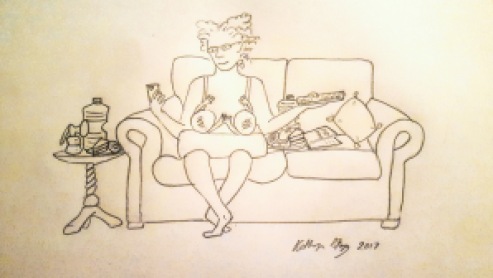There are several reasons milk supply may have to be established by expressing and not by directly breastfeeding. Mother and baby may have to be separated after birth due to prematurity or illness, or maybe baby just cannot latch on for some reason. Maybe baby is tongue tied, has a cleft palate or is too sleepy to feed effectively.
So how does a new mum start to establish a milk supply if she is not directly feeding her baby?
After birth you should be encouraged to hand express colostrum within an hour of birth if possible, or at least within the first 6 hours. Ask to be shown the technique by your midwife, or there are plenty of great video tutorials online. This one from Global Health Media is particularly good, click here. It is important to massage the whole breast and the nipple for a couple of minutes before starting. Hand expressing is recommended for the first two to three days until the milk begins to come in as colostrum is very thick and sticky and is in small quantities, so will get lost in a pump. However, if large quantities of colostrum are being expressed, you could move onto the pump earlier. Also there are settings on some hospital pumps designed for expressing colostrum and some mums respond better to this. The pump can also be used just for stimulation.
Babies only need a small quantity of colostrum, so every drop counts. These small drops can be sucked up with a syringe direct from the nipple or dripped into a small cup and then sucked into a syringe. This can then be given directly to the baby. You should be encouraged to hand express 8 to 10 times in 24 hours to mimic the baby’s feeding patterns. This will give enough colostrum to feed and to prime the lactation sites so that you will have the greatest chance to make a full supply or as near as possible. Some mums do struggle to express any colostrum in the first few days. It does not mean it’s not in the breast, we all start making colostrum in the second trimester of pregnancy, but it can be a bit challenging to get it out. If it is proving difficult then maybe ask about donor breast milk until your milk “comes in”. Most mums find they can express mature breast milk much more easily.

Moving on to the pump. Milk begins to “come in” around 3 to 5 days after birth, a process called “lactogenesis II”. It is triggered by the birth of the placenta and will happen whether a mum is breastfeeding, pumping or doing neither. Breast milk gradually changes from colostrum to mature milk over a number of days and volumes should begin to increase. Continuing to pump 8 to 10 times a day will help ensure you establish a full supply.
Top tips to establish a good supply!
Frequency – There really is no better way to get a full supply than to pump frequently; 8 to 10 times a day to begin with is essential. Some mums with large storage capacities may be able to drop a couple of sessions and continue to make enough milk, but for many frequency is the key. Expressing sessions do not need to be equally spaced. And if you miss one for some reason, try to shuffle up the others so you still get the same number over 24 hours.
Efficiency – Using a hospital grade pump is recommended. In hospital the staff should be able to provide one for you to use, normally in the pumping room, sometimes by baby’s cot or incubator. Once discharged, hospital grade pumps can be hired either direct from the manufacturer or from a local pump agent. If baby is in NICU there is often a discount code.
Breast shell size – It is really important to get the pump’s breast shell size correct. This will mean pumping should be comfortable and not cause any damage to the nipples, and it will also help maximise milk production. Just a note to say sometimes a pair of breasts need two different sized shells! And sometimes you need to change size as you go through your pumping journey as breast size changes. Nipple diameter is the key. Check your manufacturer’s information on this and experiment a bit.
Power pumping – This mimics a baby’s natural cluster feeding pattern and can help stimulate milk production. The pattern is as follows using a double pump: pump for 20 minutes, have a 10 minute rest, pump for 10 minutes, rest for 10 minutes and then pump for a further 10 minutes. This can be done once a day to help boost supply. If you are using a single pump then you can power pump by pumping 10 minutes on the left and then 10 minutes on the right, rest 5 minutes, pump 10 minutes on the left and 10 minutes on the right, rest for 5 minutes and then pump ten minutes on the left and 10 minutes on the right again.

Hands on pumping technique – This is a technique which incorporates massage, hand expressing and pumping all at the same time. Many have found that this can greatly increase output. For a more detailed explanation watch this video
Hand expressing – after the flow has slowed you could try finishing off by doing some hand expressing. Often a little more can be squeezed out by hand
A hands free pumping bra – This can make the above massage much easier, as you use the bra to hold the pump onto the breasts and so hands are free. It also means you can pump and do other things at the same time. This can be essential, especially if you have older children. You can buy them or make your own by cutting vertical slots in an old bra or sports bra where your nipples are, and you can insert the cones through the slits.
Warmth – Applying a warm compress just before you express can help the let-down reflex.
Skin to skin with baby – Skin to skin, or kangaroo care as it is often referred to, helps boost oxytocin and encourages the milk to flow. Oxytocin is one of the key hormones involved in the production of breast milk and, amongst other things, stimulates the let-down reflex, meaning milk flows more easily when pumping.
Look at baby – Photos, videos, pictures, pumping next to the cot, listening to your baby. All these remind the breasts what they are supposed to be doing! They also stimulate oxytocin and help with supply.
Latch baby – If baby is beginning to latch on to the breast, pumping straight afterwards can make it much easier for the milk to flow as the baby will have stimulated the let-down reflex.
Distraction – “A watched pot never boils”. It’s the same with pumping. If you watch what you get, you will likely not get so much. Distracting with listening to music, relaxation recordings, mindfulness, watching comedy, chatting to other mums or friends and family all have been shown to increase milk production. Stress can inhibit the let down reflex so these techniques can help keep you relaxed.
Eat and drink – Good for health and energy of the mother, not necessarily for milk production.
Rest – It is really essential for mums to rest. Yes we also want them to wake once or twice a night to pump, but getting a good amount of sleep is so important to cope with the stresses and strains that you feel when a baby who is latching. Get help with all the usual household chores, looking after older children and cooking. Mother the mother so the mother is able to mother the baby.
Galactagogues – There are many foods or medications out there which either have some scientific evidence behind them or have anecdotal evidence that they can increases milk production. However, none of these work unless the milk is being removed frequently from the breast. They are not a magic wand. For more info on galactagogues have a look at this link

It is important to look at 24 hour output, not necessarily what is expressed in each session. This is because there is often a wide variation in amounts from different times of day, and also each breast often gives a different amount. Over the first few weeks, we hope to see a gradual increase in volume in each 24 hour period.
Once babies are strong enough or well enough they should be able to move gradually on to breastfeeding directly. Make sure you seek some support from a trained breastfeeding specialist to help you achieve this.
Kathryn Stagg IBCLC 2018







